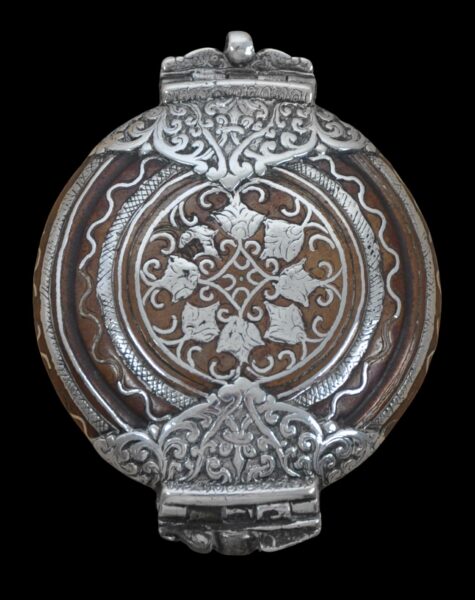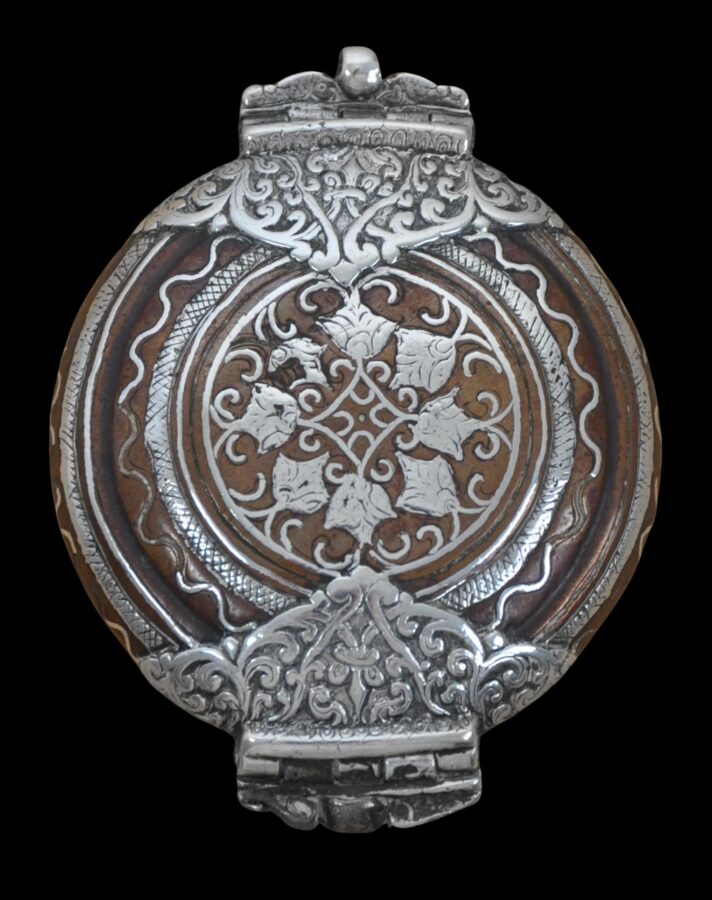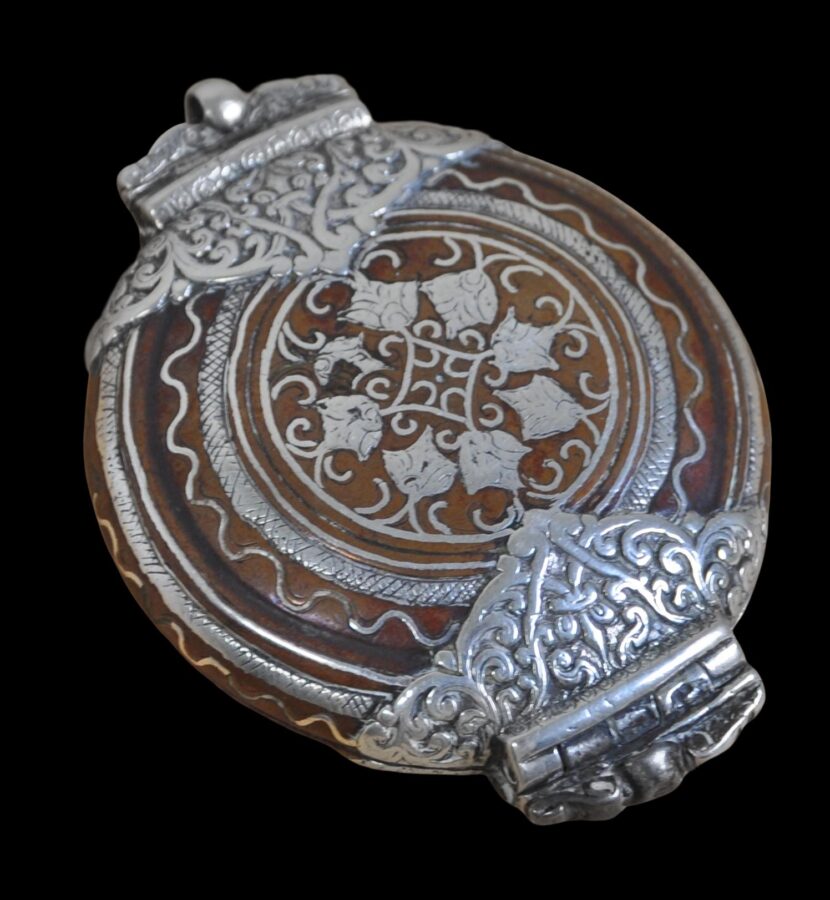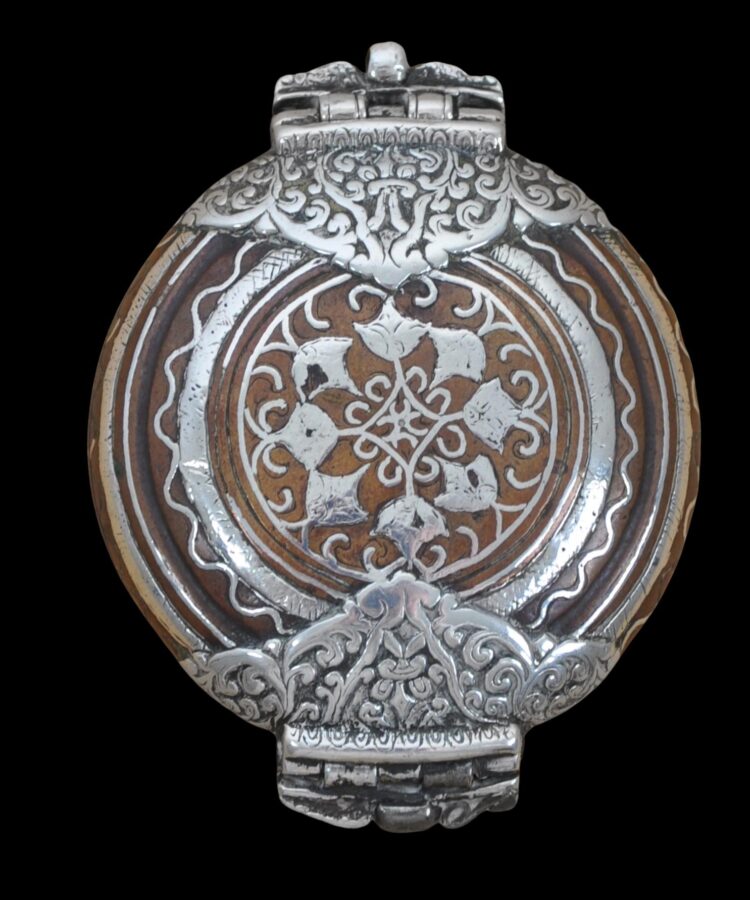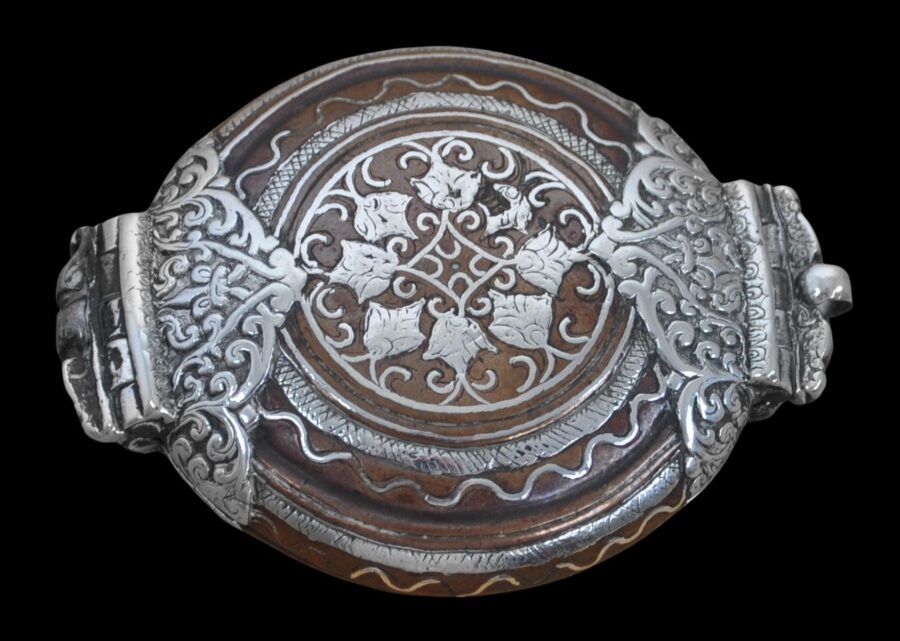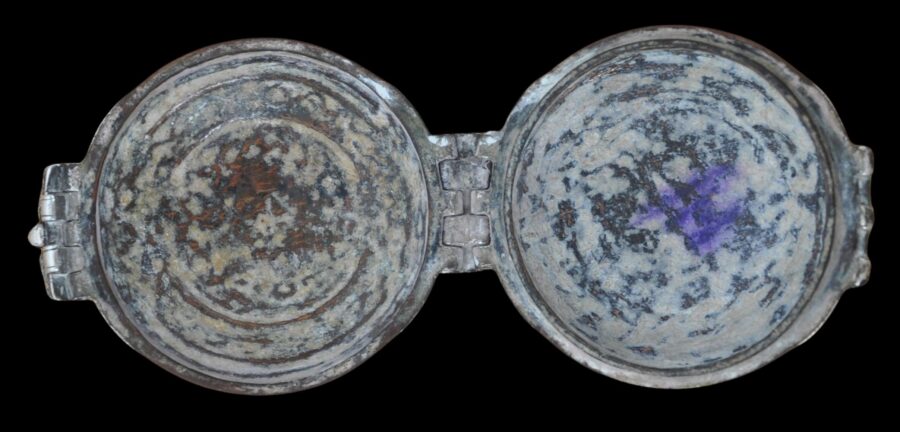This copper box, with silver mounts and silver inlay, is of round, flattened form and was used to hold and carry slaked lime (chunam) for mixing with sliced areca nut for betel chewing. Such boxes were known in Sri Lanka as a killotaya. It is finely decorated with scrolling flower and petal motifs.
The lime was obtained by burning and crushing seashells and coral.
Chewing betel in Sri Lanka was a particularly social activity but most people would carry their own lime in containers such as this even if their hosts had the rest of the betel quid ingredients available because powdered lime was thought to be easily adulterated with poison and so users tended to only trust their own lime.
The box is in two hinged halves and flips open to reveal the contents; it has hinges on one side. The form is reminiscent of, and almost certainly based on, a European gentleman’s pocket watch case, and like a watch case would have been held in a pocket or cloth fold.
The example here is in fine condition with only minor losses to the inlay. The walls are thick and the item is heavy for its size. The interior retains traces of white powdered lime.
References
Brownrigg, H., Betel Cutters from the Samuel Eilenberg Collection, Thames & Hudson, 1992.
Coomaraswamy, A.K., Mediaeval Sinhalese Art, Pantheon Books, 1956 reprint of the 1908 edition.
Treasures from India: The Clive Collection at Powis Castle, The National Trust, 1987.


